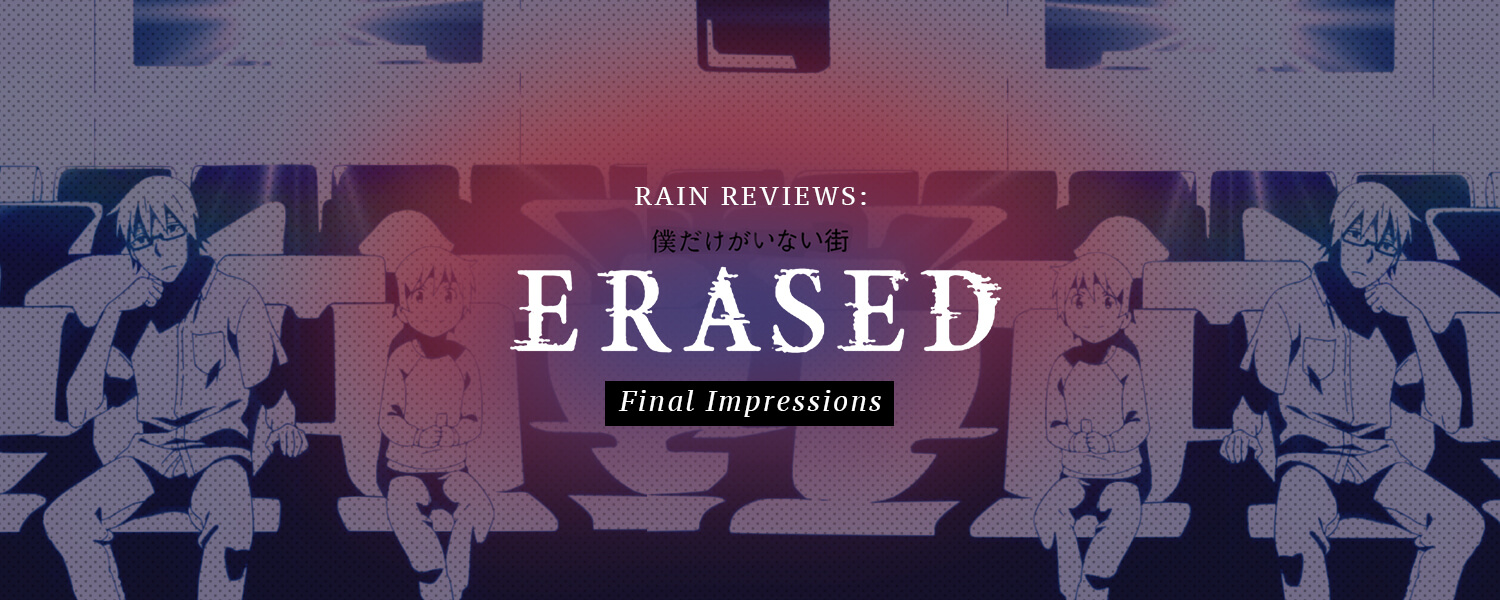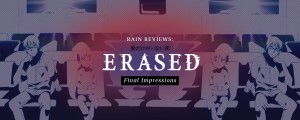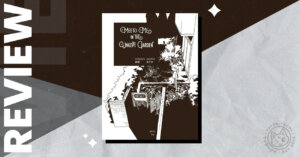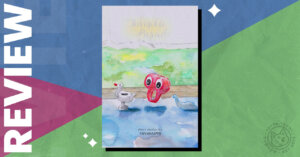ERASED, the story of a young man named Satoru who returns to his childhood in 1988 in order to prevent three children from being murdered, was one of the most talked about shows of the Winter 2016 season. This was both positive and negative: many praises were doled out, but strong criticisms also were made. We here at Yatta-Tachi reviewed each episode of the series, which started with strong expectations and ended with a more discerning look at what the show was trying to do, rather than what those expectations wanted it to do. Now that every episode has not only been seen, but meticulously pondered over, how does the show as a whole stack up? While it isn’t the total package I thought it would be, ERASED still has something to offer, as long as you go into it with a certain frame of mind.
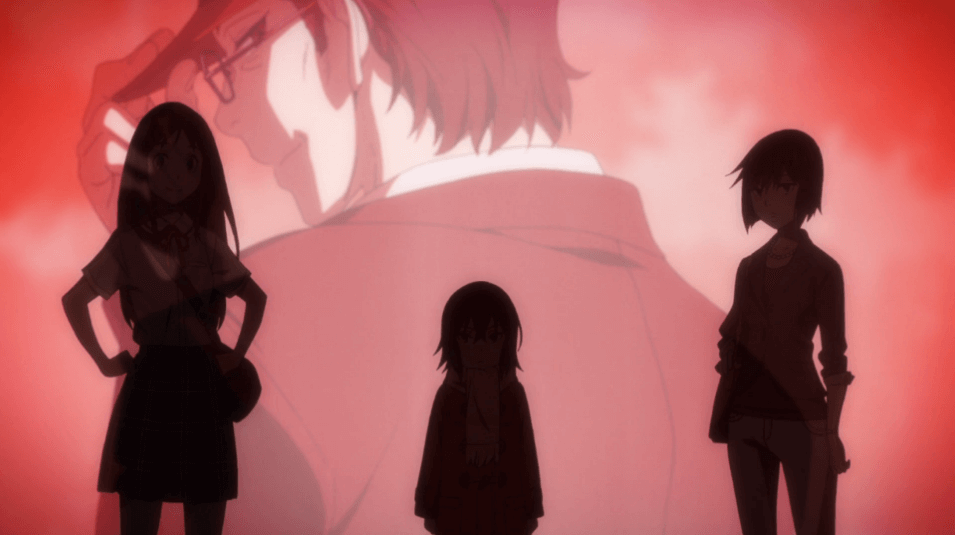
As a mystery, ERASED falls somewhat flat. Sure, there’s plenty of tension throughout the show, and most episodes end on cliffhangers that successfully leave you wanting more, but in terms of the typical “whodunit?” caper, it misses the mark. For a show about the abduction and murder of young children, as well as an adult in the first episode, only one person is consistently pointed at with regards to being the likely culprit. That person, needless to say, ends up being the perpetrator. Thus, you’re left seeing evidence that seems subtle at first, pointing to one person, and soon enough the show pretty much slaps you in the face with cues to his guilt. The opening sequence doesn’t really help matters, either: the culprit is shown pretty clearly, and if you think about who from Satoru’s past physically fits the character shown in the opening as well as Satoru’s present, there really can only be one choice. If you’re hoping to get a really nuanced mystery, ERASED isn’t your best bet.

What if you look at ERASED through the lens of a different genre? Considering how much emphasis the show puts on Satoru’s relationships and conversations with various characters both directly and indirectly attached to the cases, I would say it’s more of a drama with thriller elements. A lot of the drama of the show stems from Satoru’s developing relationship with his classmate Kayo Hinazuki. One of the things that makes the show so suspenseful and thrilling is not only how he’s going to prevent her from becoming a victim, but also his discovery of her problems at home. There’s a reason the show spends most of its time having Satoru trying his best to make sure she stays safe; it turns out to be the most engaging portion of the series. You become just as invested as he is in protecting Kayo. This may be the case because he has to start from zero with regards to getting to know her. The show has a way of capturing the awkwardness of making friends when you’ve reached the age range of an older kid: it’s no longer as simple as “let’s be friends.” It seems as if most of what makes ERASED good stems from Satoru’s relationship with Kayo. The animation and direction take beautiful and unique approaches during scenes that have the two of them together. From the colors to the movement of the camera, I was left pretty impressed with numerous moments featuring the two of them.
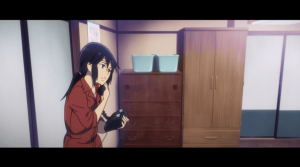
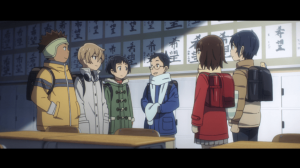
Does this mean that everything outside of Satoru’s relationship with Kayo is bad? Not at all. There are quite a few secondary characters that pop up in this show, and some make just as much of an impression as Kayo. Satoru’s mother, Sachiko, is one such individual. Not many anime give a character’s parents a significant amount of screen time. If you even get to see either of the parents at all, it’s typically a sighting here or there. With ERASED, Sachiko is ever-supportive of her son, as well as keenly perceptive. With so few adults appearing in Satoru’s past, she provides much needed warmth to the story. She is also involved in some of the most touching scenes of the show. Sachiko ended up being my favorite of the secondary characters. The culprit is naturally a prominent character in the series, and while he’s pretty well-written before the reveal, he devolves into a two-dimensional caricature of a villain by the time Satoru becomes aware of his desire for treachery. Though the ending of the show makes efforts to make him more complex, he’s still pretty far from being an intricate and unique antagonist. While Satoru’s friends are somewhat prominent, only two of them are featured regularly in the plot. Even then, we never really learn too much about them, despite them being given significance to the plot as well as being kind of intriguing.
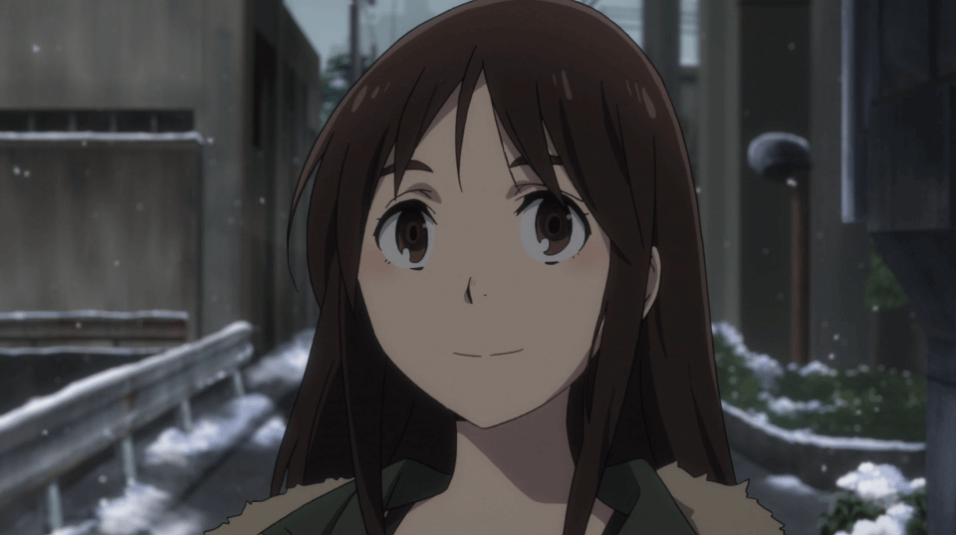
Finally, I have mixed feelings about Satoru’s friend from his present-day, Airi. Sure, she is a major influence with regards to Satoru’s way of thinking, but in the end, she doesn’t feature in the show enough for me to end up caring about her. The show is mostly set in Satoru’s past, and since Airi isn’t around during that portion, she isn’t given enough time to become a more fleshed-out character. While Satoru’s friends aren’t the most developed characters, either, both their behaviors and the things they mention peaked my interest and made me want to learn more about them. Airi pretty much just tells Satoru her backstory, rather than having things about her be revealed a little more naturally. Overall, there ends up being a pretty mixed bag of side characters.
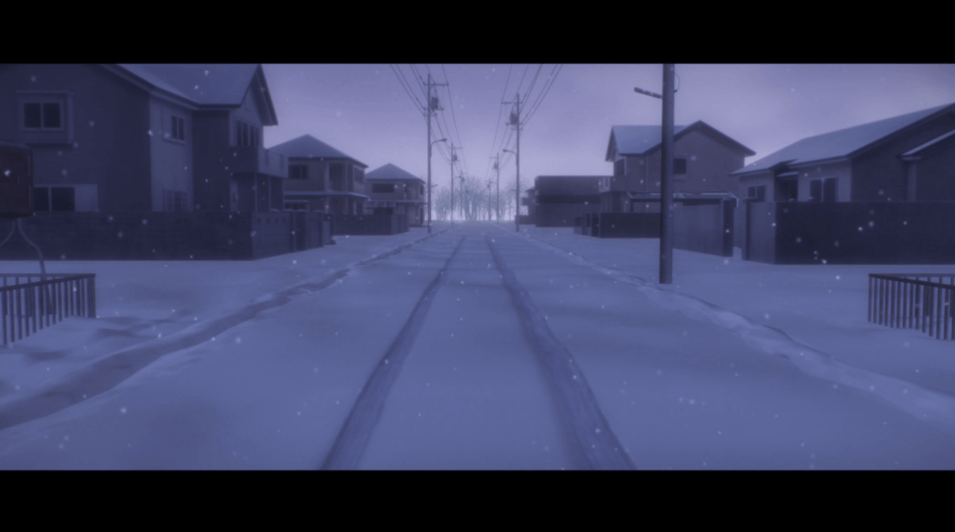
At the end of the day, I think ERASED is just that: a mixed bag. There are moments of subtlety that are done exceptionally well, and there are moments that are so in-your-face that it comes off unbelievably poor. There’s animation that looks lovely, and then there are frames that are pretty awkward-looking or poorly drawn. There are characters who consistently add charm and heart to the show, and there are characters who either don’t do much of anything or drain the quality from the production. It’s a bit of a shame, to be honest, because there is definitely a lot of things that were well-done. Considering the manga is eight volumes long versus the show’s twelve episodes, I imagine corners were cut with regards to plot and character development. However, no matter how good the source material may be, the adaptation needs to be able to stand on its own. I think ERASED is able to, though its legs can be wobbly. While there are elements of the show that can be frustrating, there’s still quite a bit that comes off as nuanced and thoughtful. If you’re looking for an interesting drama with a bit of crime and thriller mixed in, this series offers something worthwhile. Amidst the issues of ERASED, the beauty of its snowy setting and the hauntingly simple soundtrack that plays behind it shines a little brighter.
The Good
- Satoru and Kayo's developing relationship provides many lovely moments
- Satoru's mother Sachiko is the strongest and most compelling of the side characters and a breath of fresh air when it comes to parents in anime
- Some scenes are well choreographed and look great
- The soundtrack acts as a nice addition to a number of scenes
The Bad
- The antagonist starts off interesting but becomes a ridiculous caricature towards the end
- Some side characters provide little to the story, and those that do aren't fleshed out too much
- The animation can sometimes look odd, with flat faces and somewhat obvious CG
- A few continuity errors

Featured Sponsor - JAST
The sweetest romance and the darkest corruption, the biggest titles and the indie darlings; for visual novels and eroge, there's nowhere better.
Big thank you to our supporters
From their continous support, we are able to pay our team for their time and hard work on the site.
We have a Thank-You page dedicated to those who help us continue the work that we’ve been doing.
See our thank you page